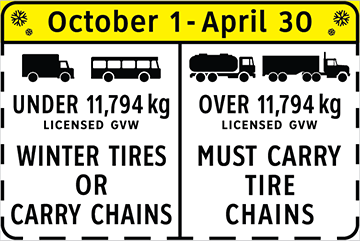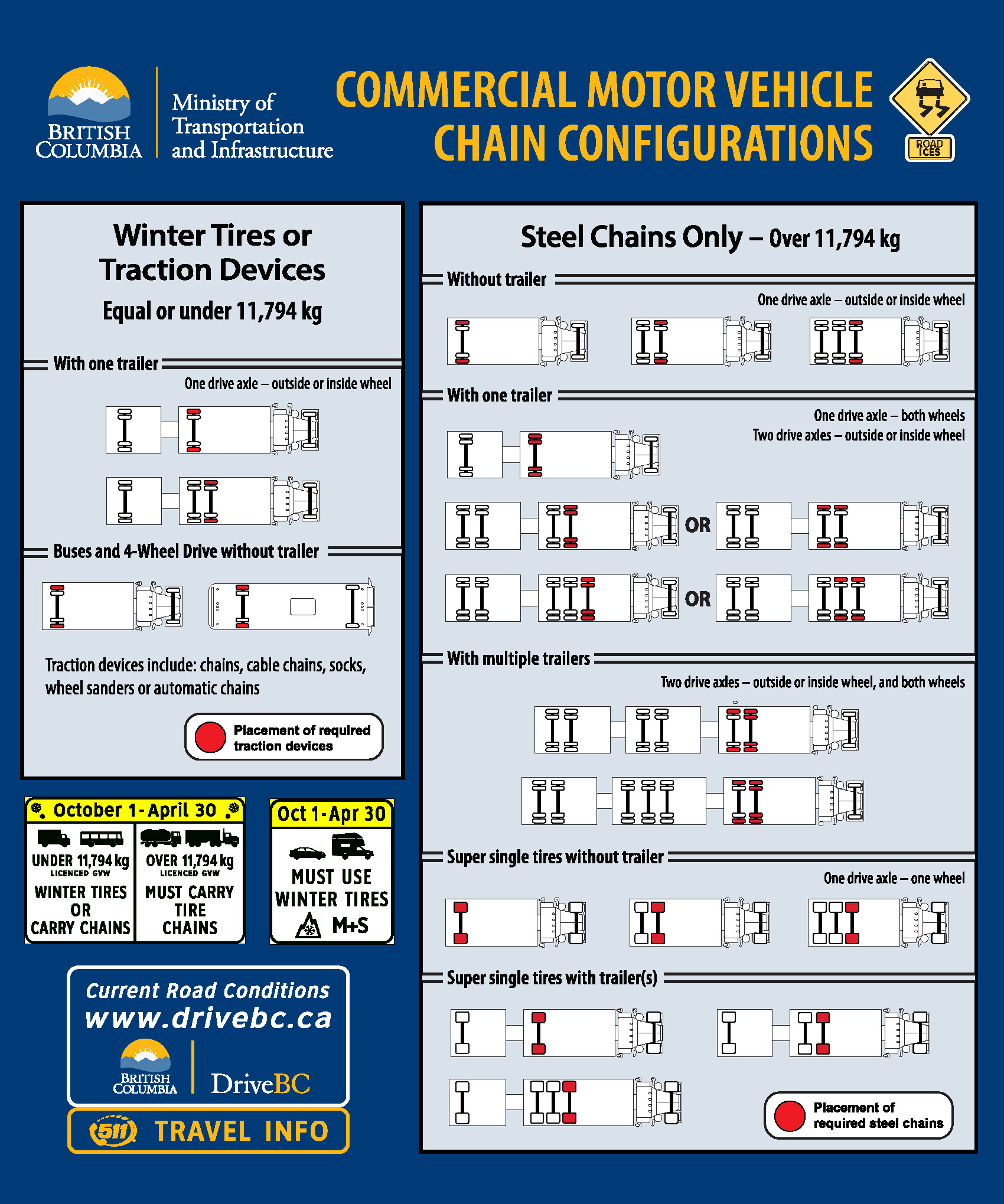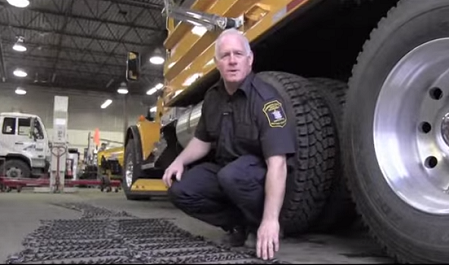Commercial Vehicle - Tire and Chain Requirements
Commercial drivers who travel outside the Greater Vancouver and Greater Victoria areas in the winter are required to carry chains, or other acceptable traction devices, and comply with all signage and regulations. Good practice is to keep chains on board at all times, and know how to install them.
Rapid changes in elevation and weather can make B.C. highway conditions unpredictable during winter months. Drivers may start a trip in sunshine but face stretches of slush, ice, heavy snowfall or compact snow along the way.
It is the responsibility of the operator of a vehicle to understand the conditions on the roads they travel and prepare their vehicle for those conditions.
Drivers must obey winter tire and chain signs throughout the province from October 1 to April 30. For select highways not located through mountain passes and/or high snowfall areas, tire and chain requirements end March 31.

Commercial trucks weighing between 5,000 kg and 11,794 kg LGVW must carry chains or acceptable traction devices, unless the vehicle is equipped with winter rated tires with the 3-peaked mountain and snowflake symbol or the M+S symbol.
Commercial vehicles 11,794 kg LGVW and greater, such as tractor trailers, are required to carry steel chains on most major highways.
Chains, Traction Devices and Additional Safety
Depending on the LGVW, vehicle type, and configuration of commercial vehicle, the requirements vary for type, number, and placement of chains or acceptable traction devices. Learn proper tire chain configurations for commercial vehicles (PDF)
*Note: The chained tires highlighted here are examples and can vary; however, they must be in the same grouping pictured.
Required for commercial vehicles 11,794 kg LGVW or greater
Steel Chains
It is a requirement that commercial vehicles with a LGVW of 11,794kg or greater use steel link chains. For larger vehicle configurations, they have been proven to provide superior traction and prevent lateral slippage.
Other Options for commercial vehicles 5,000 - 11,794 kg LGVW
Cable Chains
Cable style chains are lighter, and due to their lower profile, don’t provide the same level of traction as steel link chains.
Automatic Tire Chains
Automatic tire chains are activated and retracted from the safety of the driver's seat, eliminating the need for manual installation of chains.
Wheel Sander
On demand, a wheel sander system delivers grit in front of the tire to increase traction.
Textile Tire Cover
A textile “sock” placed over a tire improves traction. They work best on snow and ice, and at low speeds. They degrade quickly when used on asphalt and at speeds higher than the manufacturer’s specifications.
Chain status reports let you know where chain-up is currently required on B.C. Highways. They are updated as new information comes in.
Chain Status Reports




